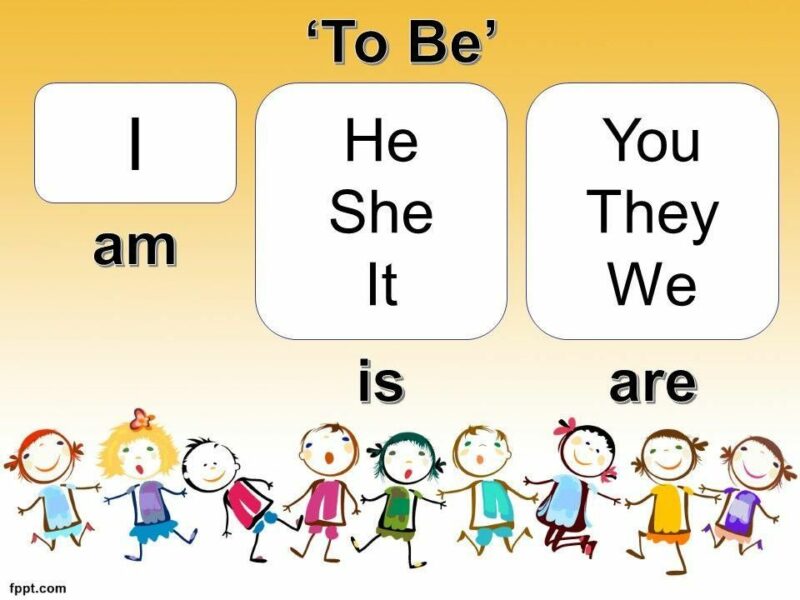VERB TO BE👀
Contents:
I.
To be Affirmative
o
Form
o
Use
Nouns;
Adjectives;
Prepositional phrases (or
complements).
o Examples
II.
To be Negative
o
Form
o
Use
Nouns;
Adjectives;
Prepositional phrases (or
complements).
o Examples
III.
Interrogative
o
Form
o
Use
Nouns;
Adjectives;
Prepositional phrases (or
complements).
o Examples
I.To be Affirmative
To be is
a copulative and auxiliary verb that is essential in grammar.
When used in its affirmative form , the
verb confirms something about the subject.
TIP: In Spanish, the
verb To be is
understood as being / being.
To be is an
irregular verb and in the affirmative form it has
this structure:
Subject + to be
+…
|
SUBJECT |
TO BE |
SHORT FORM* |
|
I |
am |
I’m |
|
You |
are |
You’re |
|
He |
is |
He’s |
|
She |
is |
She’s |
|
It |
is |
It’s |
|
We |
are |
We’re |
|
You |
are |
You’re |
|
They |
are |
They’re |
The
abbreviated form (contraction) is used in oral language or informal writing.
When we use to be as
a connector with other kinds of words, it gives us more information about the condition
of the subject.
To
be used with:
1. Nouns;
2.
Adjectives;
3.
Prepositional phrases (or
complements).
Example
If you
use to be with:
1. Nouns
o
I am a student.
o He is a
lawyer.
o We are doctors.
2.
Adjectives
o
I am tall.
o He is polite.
o Many
people are happy.
3.
Prepositional phrases (or
complements)
o My book is on
the bed.
o
Harry Potter is on the TV.
o
The eggs are in the box.
You can
use to be in abbreviated forms:
· I’m 12
years old.
·
This coat‘s $100.
· They‘re my best friends.
II.To be Negative
To be is
a linking verb and an auxiliary verb that is essential in grammar.
When expressed in its negative form, the verb
denies something about the subject.
Form
To be is
an irregular verb and, in the negative form,
it has this structure:
Subject + to be + not + …
|
SUBJECT |
TO BE + NOT |
SHORT FORM* |
|
I |
am not |
I’m not |
|
You |
are not |
You’re not/You
aren’t |
|
He |
is not |
He’s not/He
isn’t |
|
She |
is not |
She’s not/She
isn’t |
|
It |
is not |
It’s not/It
isn’t |
|
We |
are not |
We’re not/We
aren’t |
|
You |
are not |
You’re not/You
aren’t |
|
They |
are not |
They’re
not/They aren’t |
*The short form is used in spoken
language or in informal writing.
We use to be as
a linking verb between other classes of words, it gives us more details about
the condition of the subject.
To be is used with:
1. Nouns;
2. Adjectives;
3. Prepositional
phrases (or complements).
Example
·
I am not a student.
·
You are not a
lawyer.
· He is not polite.
·
She is not 22 years old.
·
My book is not on the bed.
· We are not doctors.
· You aren’t famous.
·
They‘re not my best friends.
o
Use
To be, in its negative form, is used to
deny something about the characteristics of the subject, for example: age,
behaviour, colour, jobs, nationality, personality, place, price, qualities,
size, time…
III.To Be in Interrogativo
To be is
a copulative and auxiliary verb and is essential in grammar.
When used in its interrogative form, the
verb serves to ask something about the subject.
TIP: In Spanish, the
verb To be is
understood as being / being.
Form
To be is
an irregular verb and in the interrogative form (which
is possible thanks to the inversion ),
it has this structure:
To be + subject +…?
|
TO BE |
SUBJECT |
QUESTION MARK |
|
Am |
I |
…? |
|
Are |
you |
…? |
|
Is |
he |
…? |
|
Is |
she |
…? |
|
Is |
it |
…? |
|
Are |
we |
…? |
|
Are |
you |
…? |
|
Are |
they |
…? |
* The abbreviated forms do not exist for
the interrogative form.
When we use to be as a connector
with other kinds of words, it gives us more information about the condition of
the subject.
To be used with:
1. Nouns;
2. Adjectives;
3. Prepositional
phrases (or complements).
Example
If you use to be with:
1. Nouns
o Am I a student?
o Is he a lawyer?
o Are we doctors?
2. Adjectives
o Am I tall?
o Is he polite?
o Are many people happy?
3. Prepositional
phrases
o
Is my book on the bed?
o
Is Harry Potter on the TV?
o
Are the eggs in the box?
Use
To be is used, in its interrogative form ,
to ask about the characteristics of the subject, for example: age, behavior,
color, jobs, nationality, personality, place, price, qualities, size, time..




No hay comentarios:
Publicar un comentario